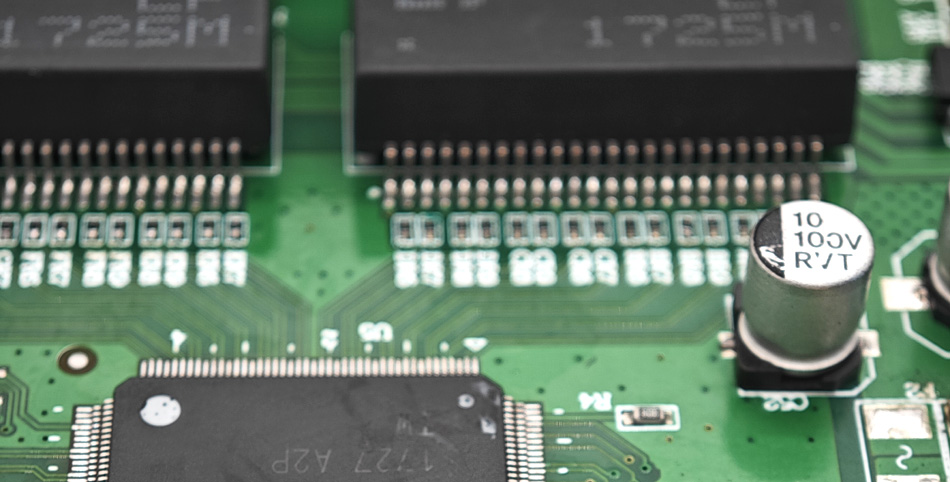- English
- Español
- Português
- русский
- Français
- 日本語
- Deutsch
- tiếng Việt
- Italiano
- Nederlands
- ภาษาไทย
- Polski
- 한국어
- Svenska
- magyar
- Malay
- বাংলা ভাষার
- Dansk
- Suomi
- हिन्दी
- Pilipino
- Türkçe
- Gaeilge
- العربية
- Indonesia
- Norsk
- تمل
- český
- ελληνικά
- український
- Javanese
- فارسی
- தமிழ்
- తెలుగు
- नेपाली
- Burmese
- български
- ລາວ
- Latine
- Қазақша
- Euskal
- Azərbaycan
- Slovenský jazyk
- Македонски
- Lietuvos
- Eesti Keel
- Română
- Slovenski
- मराठी
- Srpski језик
Component soldering in PCBA processing
2024-09-19
PCBA processing (Printed Circuit Board Assembly) is a crucial part of the electronic manufacturing process, and component soldering is one of the core steps of PCBA processing. Its quality and technical level directly affect the performance and reliability of the entire electronic product. This article will discuss the component soldering in PCBA processing.

Surface Mount Technology (SMT) soldering
Surface Mount Technology (SMT) is a widely used soldering method in PCBA processing. Compared with traditional plug-in soldering technology, it has higher density, better performance and higher reliability.
1. SMT soldering principle
SMT soldering is to directly mount components on the surface of the PCB board and connect the components to the PCB board through soldering technology. Common SMT soldering methods include hot air furnace soldering, wave soldering and reflow soldering.
2. Hot air furnace soldering
Hot air furnace soldering is to put the PCB board into a preheated hot air furnace to melt the solder paste at the soldering point, and then mount the components on the melted solder paste, and form soldering after the solder paste cools down.
3. Wave soldering
Wave soldering is to immerse the soldering points of the PCB board in the molten solder wave, so that the solder is coated on the soldering points, and then the components are mounted on the solder coating, and the solder is formed after cooling.
4. Reflow soldering
Reflow soldering is to put the mounted components and PCB board into the reflow oven, melt the solder paste by heating, and then cool and solidify to form a weld.
Soldering quality control
The quality of component soldering is directly related to the performance and reliability of PCBA products, so the soldering quality needs to be strictly controlled.
1. soldering temperature
Controlling the soldering temperature is the key to ensuring soldering quality. Too high temperature can easily lead to solder bubbles and incomplete soldering; too low temperature can lead to loose soldering and cause problems such as cold soldering.
2. soldering time
soldering time is also an important factor affecting soldering quality. Too long time can easily lead to damage to components or excessive melting of solder joints; too short time may lead to loose soldering and cause problems such as cold soldering.
3. soldering process
Different types of components and PCB boards require different soldering processes. For example, BGA (Ball Grid Array) components require hot air oven reflow soldering process, while QFP (Quad Flat Package) components are suitable for wave soldering process.
Manual soldering and automated soldering
In addition to automated soldering technology, some special components or small batch production may require manual soldering.
1. Manual soldering
Manual soldering requires experienced operators who can adjust soldering parameters according to soldering requirements to ensure soldering quality.
2. Automated soldering
Automated soldering completes soldering work through robots or soldering equipment, which can improve production efficiency and soldering quality. It is suitable for mass production and high-precision soldering requirements.
Conclusion
Component soldering is one of the core technologies in PCBA processing, which directly affects the performance and reliability of the entire electronic product. By reasonably selecting soldering processes, strictly controlling soldering parameters and adopting automated soldering technology, the soldering quality and production efficiency can be effectively improved, and the quality and reliability of PCBA products can be guaranteed.
-
Delivery Service






-
Payment Options









